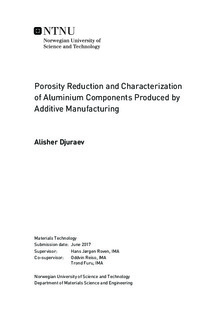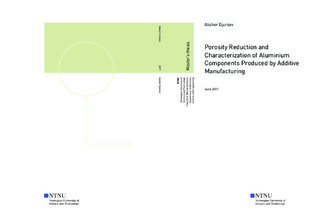| dc.description.abstract | Selective laser melting (SLM) is a relatively novel method used to produce metallic
parts directly from computer models by selectively fusing metallic powder. The production
is fundamentally different from traditional production methods as it adds material
in a layer by layer manner to make up a part, instead of subtracting the material to
achieve the wanted geometry. Due to the high thermal gradients the material is subjected
to under production a unique macro- and microstrcture is produced in SLM processed
parts. This unique structure results in superior mechanical properties found in the parts,
however there are challenges in regards to porosity, specially in systems with low laser
power. In this work two aluminium alloys are investigated: a AlSi10Mg casting alloy and
a AA6061 wrought alloy. Both materials are build from a powder state to solid components.
The goal of the build was to produce parts with minimal amounts of porosity
with the equipment available. The completed specimens were investigated by light- and
electron microscopy, and the mechanical properties of both alloys were tested.
The results show that the porosity of the components can be reduced by employing
proper process parameters and post treatment, however the quality of the feedstock powder
used is equally important. The two alloys are dominated by two kinds of different
pores, cracks are largely present in the AA6061 alloy while so called keyhole pores make
up most of the porosity found in the AlSi10Mg alloy. The unique micro- and macrostructure
could be identied in both alloys by employing appropriate specimen preparation.
The AlSi10Mg alloy was found to be mechanicaly superior than the AA6061 alloy, this
is partly attributed to the much ner microstructure of the cast alloy and partly to the
cracks found in the AA6061 alloy. | |

